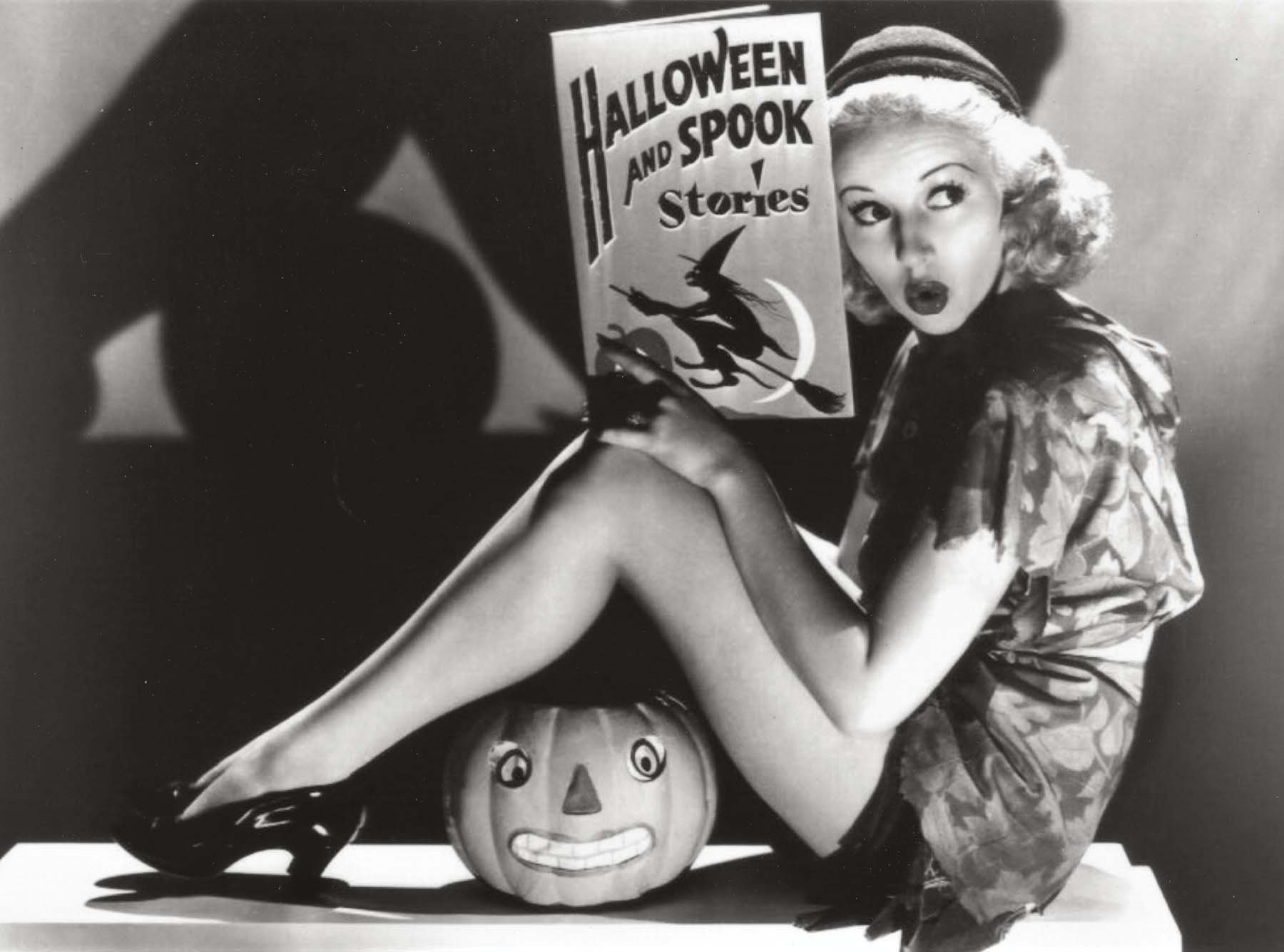
Ann Miller in an undated seasonal pinup
HALLOWEEN: A HOLLYWOOD STATE OF MIND
Both Hollywood and Halloween emerged as significant cultural fixtures during the same decades of the early twentieth century. Americans have always believed that a malleable identity is our birthright, that we all have the prerogative and power to become anyone or anything of our individual choice. Like Halloween, Hollywood is about dressing up and acting out all the possibilities of our mercurial national personality.
Halloween made its American screen debut, however briefly, in The Three of Us (1914), starring Mabel Taliaferro, well known at the time as partner to the future horror director Tod Browning in Komic-Mutual two-reelers. The Three of Us, from the 1906 stage play by Rachel Crothers, depicted a festive Halloween dinner in a Colorado mining town. A more upscale celebration was featured in The Way of a Man with a Maid (1918), directed by Donald Crisp, in which a struggling bookkeeper scrimps and saves to afford the fashionable attire that will impress a girl he escorts to a party on the magic night of October 31.
A far more sensational Halloween was featured in Do the Dead Talk? (1920), a story of seances and spiritualism that included actress Herminia France setting fire to her clothes while lighting a jack-o’-lantern. It was the first time a movie had sounded any kind of cautionary note about the holiday, presaging in a tiny way the tsunami of fake blood and rubber body parts that would eventually overwhelm the seasonal festivities. No one connected with Do the Dead Talk? could imagine that, a century later, Halloween celebrations would routinely include the movie-derived thrill of being chased through a theme park with a chainsaw.
Early Hollywood overwhelmingly approached Halloween affectionately. The wholesale commercialization of the holiday was a distinctly post–World War II phenomenon; studios like Universal, for instance, didn’t begin licensing Halloween costumes of their famous monsters until the 1960s. Halloween made regular cameo appearances in films, and audiences smiled at the homespun costumes and activities that reflected their own holiday customs. In the real world, Halloween vandalism was a big problem during the Depression years, but Hollywood, ruled by the all-powerful Production Code, would never depict anything but the mildest holiday prank on-screen for fear of demonstrating the forbidden “technique of crime” to the young and impressionable.
Fans of the classic movie magazines never saw October advertisements for Halloween film tie-ins and merchandise, but they were regularly treated to glamorous photo pinups of their favorite actresses inspired by traditional Halloween postcards and decorations. Starlets and established stars alike posed in pointy hats and racy witch costumes surrounded by the holiday’s obligatory paraphernalia and imagery: jack-o’-lanterns, black cats, bats, and broomsticks. The pioneers of this durable tradition were silent stars like Clara Bow and Colleen Moore, followed by the likes of Myrna Loy, Joan Crawford, Shirley Temple, Ava Gardner, Betty Grable, Veronica Lake, Ann Miller, and Debbie Reynolds.
Spooky publicity photos of actors were usually reserved for top horror stars like Boris Karloff, Bela Lugosi, and Vincent Price. Their classic fright films were released year-round, but photographers never resisted vintage Halloween iconography for these assignments whenever they occurred. Shadow silhouettes of black cats, bats, and cobwebs worked just as well for movie marketing as they did for party favors and decorations.
Disney, as usual, always had its finger on the pulse of commercial possibilities for Halloween before its competitors. Its animated Silly Symphony series short, The Skeleton Dance, was a perfect embodiment of the holiday spirit, delighting audiences throughout the fall of 1929. Mickey and Minnie Mouse were among the earliest examples of character licensing when they first appeared as Halloween costumes in the 1930s, and Disney’s 1952 Donald Duck cartoon Trick or Treat, with its catchy title song, modeled and standardized the begging ritual for millions of suburban children, just as candy companies got on the bandwagon in a big way.